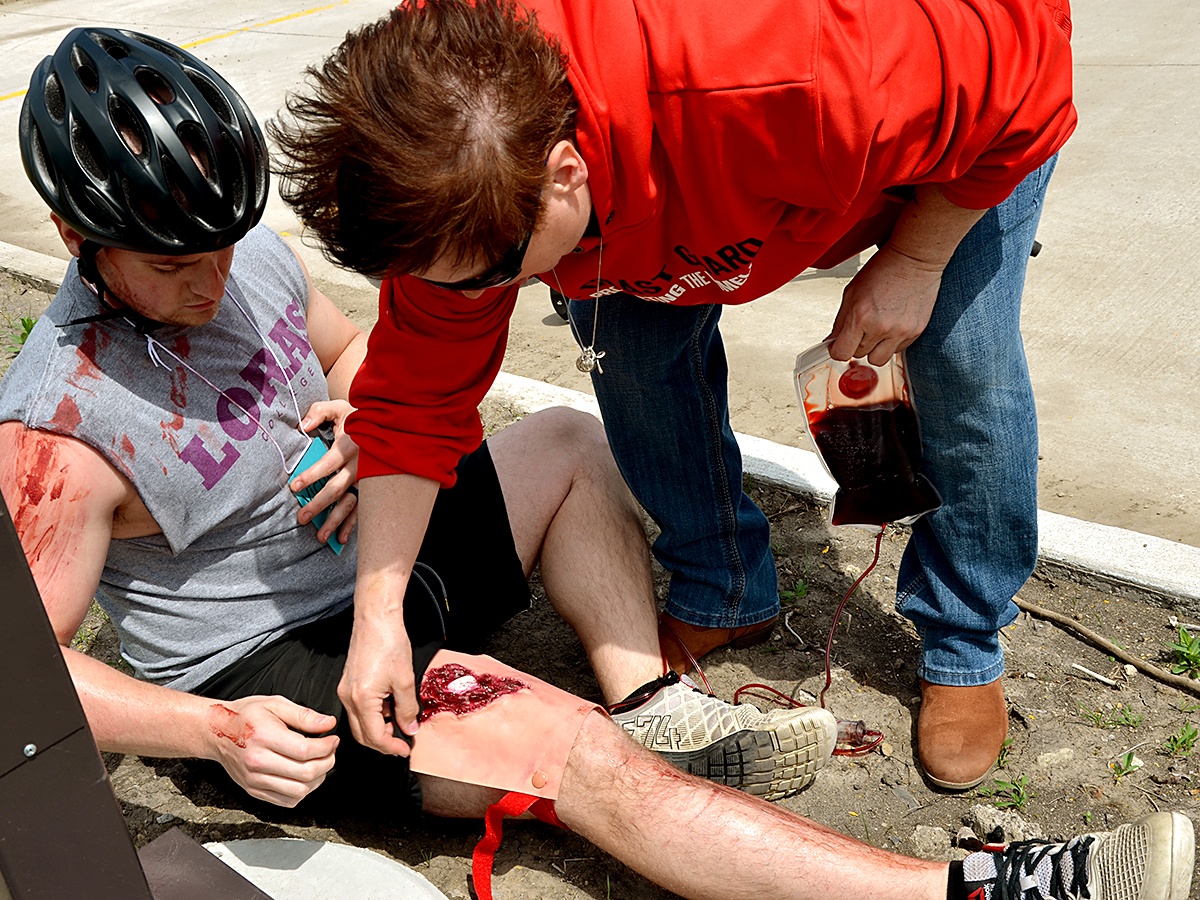
This is an interview with Maria Border, Instructor of Workforce Education and Development at Penn State University. Most nurse educators will tell you there isn’t much room for creativity in their curriculums, but Border will tell you moulage is the exception to the rule.
Katy Mogg: How would you describe moulage?
Maria Border: Moulage is a teaching strategy used to provide a visually stimulating and more authentic experience for the student.
KM: How realistic does it get?
MB: Military and emergency response personnel have used simulated wounds and trauma to enhance training for many years. It makes education come to life for students in ways that a picture cannot. Moulage stimulates the students’ senses with hands-on learning.
KM: Seems like everything can be done through virtual reality now, even hands-on learning. What do students get from learning makeup techniques in the classroom that they can’t get from a computer?
MB: Providing medical care requires skill in medical competencies, as well as on an interpersonal level. Moulage is a lesson that uses simulation. Students use clues from their combined senses – sight, touch, smell, and sound – to create an understanding about what is going on with the patient, and what their next interventions or actions should be.
KM: Do you run simulations with a manikin, or with simulated participants standing in for patients?
MB: Both! I may run a scenario on a mankin first and follow the same scenario with a real human... that way, the student can have double exposure, and feedback from both experiences.
KM: What’s the difference in using a manikin versus a simulated participant?
MB: One of the biggest differences in applying moulage to a human vs. manikin is that students know a manikin is not real. Even when going through a simulation scenario, there is some degree of comfort in knowing that the manikin is not really going to die or say something unexpected. When you moulage a real human, it adds a little bit of mystery for the student.
KM: Is it better to use simulated participants?
MB: Not necessarily. Using moulage on a manikin is equally important to using it with simulated participants because it enhances the authenticity of the simulation. A simulated participant makes the scenario more unpredictable, so students see it as higher stakes. Humans react to students’ actions and interventions with true feelings and perceptions about the care being provided.
KM: What advice do you have for student who want to learn more about moulage?
MB: Moulage is one of the few places in healthcare education where home remedies are welcome, so start by creating on yourself! A lot of first aid scenarios are relatively easy to reproduce. Try cheap blue and purple eye shadow, a go-to for creating bruises.
 Maria Border is a Registered Nurse and an Instructor for Penn State University’s Professional Personnel Development Center. She applies the knowledge and skills she has attained through her background as a nurse and an educator in order to provide support to Health Occupations’ Instructors and Career and Technical Educators throughout the commonwealth of Pennsylvania. Border also serves as Chair for the annual Strategies Conference: Educational Excellence for Healthcare Providers and Educators. Pocket Nurse and Maria invite you to discover more about moulage and professional moulage products during this year’s conference event taking place on Nov. 2 in State College, PA. For moulage products, visit www.PocketNurse.com/Moulage .
Maria Border is a Registered Nurse and an Instructor for Penn State University’s Professional Personnel Development Center. She applies the knowledge and skills she has attained through her background as a nurse and an educator in order to provide support to Health Occupations’ Instructors and Career and Technical Educators throughout the commonwealth of Pennsylvania. Border also serves as Chair for the annual Strategies Conference: Educational Excellence for Healthcare Providers and Educators. Pocket Nurse and Maria invite you to discover more about moulage and professional moulage products during this year’s conference event taking place on Nov. 2 in State College, PA. For moulage products, visit www.PocketNurse.com/Moulage .
Katy Mogg was tradeshow coordinator at Pocket Nurse. Featured image by Evan Stiger, Pocket Nurse marketing coordinator II, from an MCI scenario staged by Des Moines Area Community College.






